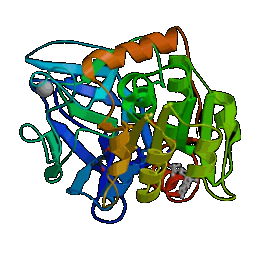
Generative Creativity - lecture 11:
Stories
Introduction
Generative methods have also been used for creating stories and
narratives.
This application is becoming increasingly significant for
role-related computer games and virtual environments.
Modeling strategies
The types of model which have been used can be grouped into three
categories.
- Author models: this models the processes undergone by a human author
during creation of story. Exemplified by (Lebowitz 1985; Dehn 1989;
Turner 1994)
- Story models: abstract representation of story as a structural
artifact, e.g., a grammar. Exemplified by (Colby 1973;Rumelhart 1975;
Pemberton 1989; Lee 1994, Wilensky 1983)
- World models: a dynamic model of a world and the behaviours and
goals of the characters within it. Exemplified by (Meehan 1976;
Okada & Endo 1992).
TAIL-SPIN
Seminal, story-generation system from the late 70s.
The idea in TAIL-SPIN (Meehan 1976; 1977) is that 'a story is about
a problem and how it gets solved'.
The system works by 'by simulating a world, assigning goals to some
characters and saying what happens when these goals interact with
events in the simulated world'.
`The reader (the user) gets to supply much of the information about
the initial state of the world, such as the choice of characters
and the relationships between one character and another.'
Then the reader chooses the problem which the story is all about,
out of a set of four problems. From then onwards, story generation
is essentially a `report' of the problem-solver.
TAIL-SPIN stories
ONCE UPON A TIME GEORGE ANT LIVED NEAR A PATCH OF GROUND. THERE WAS
A NEST IN AN ASH TREE. WILMA BIRD LIVED IN THE NEST. THERE WAS SOME
WATER IN A RIVER. WILMA KNEW THAT THE WATER WAS IN THE RIVER.
GEORGE KNEW THAT THE WATER WAS IN THE RIVER. ONE DAY WILMA WAS VERY
THIRSTY. WILMA WANTED TO GET NEAR SOME WATER. WILMA FLEW FROM HER
NEST ACROSS THE MEADOW THROUGH A VALLEY TO THE RIVER. WILMA DRANK
THE WATER. WILMA WASN'T THIRSTY ANYMORE.
GEORGE WAS VERY THIRSTY. GEORGE WANTED TO GET NEAR SOME WATER.
GEORGE WALKED FROM HIS PATCH OF GROUND ACROSS THE MEADOW THROUGH
THE VALLEY TO A RIVER. GEORGE FELL INTO THE WATER. GEORGE WANTED TO
GET NEAR THE VALLEY. GEORGE COULDN'T GET NEAR THE VALLEY. GEORGE
WANTED TO GET NEAR THE MEADOW. GEORGE COULDN'T GET NEAR THE MEADOW.
WILMA WANTED TO GET NEAR GEORGE. WILMA GRABBED GEORGE WITH HER
CLAW. WILMA TOOK GEORGE FROM THE RIVER THROUGH THE VALLEY TO THE
MEADOW. GEORGE WAS DEVOTED TO WILMA. GEORGE OWED EVERYTHING TO
WILMA. WILMA LET GO OF GEORGE. GEORGE FELL TO THE MEADOW. THE END.
How to make the stories more interesting
According to Meehan (1976) the way to make the generated story
interesting is to `fix it in advance. You rig the world so that if
people do behave rationally they'll do some interesting things...'
But this seems not to work too well.
See also recent stories by micro-tail-spin on the web.
MAKEBELIEVE
Hugo Liu, Push Singh. (2002). MAKEBELIEVE: Using Commonsense to
Generate Stories. Proceedings of the Eighteenth National Conference
on Artificial Intelligence, AAAI 2002, July 28 - August 1, 2002,
Edmonton, Alberta, Canada. AAAI Press, 2002, pp. 957-958.
- uses commonsense knowledge to generate short
fictional texts from an initial seed story step supplied by the
user.
- Incorporates some
commonsense knowledge describing causality, such as the rule that
drinking alcohol induces intoxication.
- Performs fuzzy inference over sets of rules, creative causal
chains, which are then used as the basis for story generation.
JOHN BECAME VERY LAZY AT WORK. JOHN LOST HIS JOB. JOHN DECIDED TO
GET DRUNK. HE STARTED TO COMMIT CRIMES. JOHN WENT TO PRISON. HE
EXPERIENCED BRUISES. JOHN CRIED. HE LOOKED AT HIMSELF DIFFERENTLY.
Interactive stories as branching narratives
Branching-narrative story generators are very common...
But not very rewarding
Summary
- Story generation is an increasingly important practical
application for GC.
- Role-playing computer games and virtual environments.
- Approaches based on use of author models, story models and world
models (with problem solving).
- Branching-narrative approaches not well integrated with
traditional model-based approaches.
Resources
Page created on: Mon Feb 16 18:52:42 GMT 2009
Feedback to Chris Thornton
